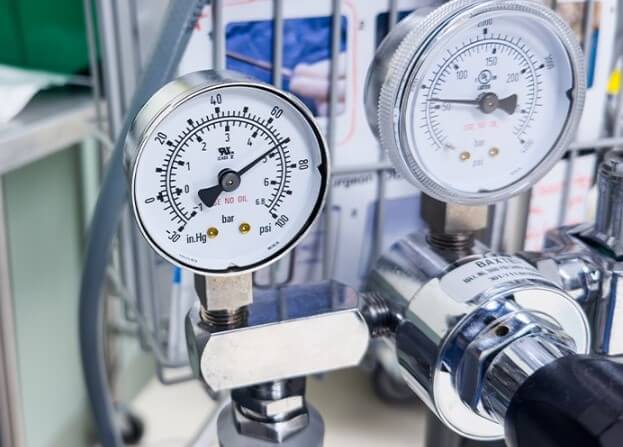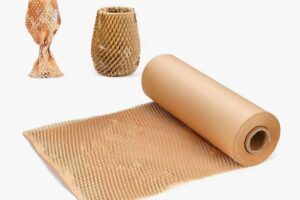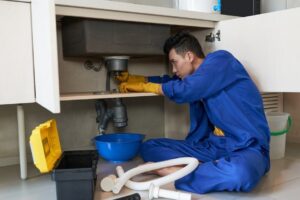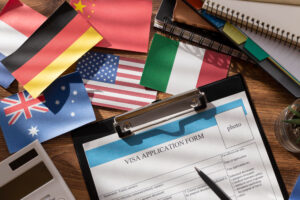
Has one ever drawn a breath and wondered if it could cause the balloon to burst? Like high pressure calibration, it’s surprisingly similar to the principle of precision, control, and the precise amount of pressure that is just right. Manufacturers, dealers, and end-users in the oil and gas industry, manufacturing companies, and aerospace businesses know what it means for equipment to work under high pressure.
But how do you ensure that the instruments used are credible in every sense of the word? That is where high pressure calibration comes into the equation. This process guarantees that your tools will withstand this pressure (pressure being the word here) while meeting safety and reliability measures.
In this guide, we’ll discuss all the recommended high-pressure calibration equipment. Whether you are an expert or new to the field, this article should make exploring the topic much easier—and perhaps even more fun.
Why is High-Pressure Calibration Necessary?
Can you think about a pressure gauge that just reads off by slightly off? That may not appear to be a problem in the present, but a single screw can trigger disastrous results due to the operating pressures of those systems. Here’s why high-pressure calibration matters:
- Safety First: Calibration also means that specific overpressure scenarios are not likely to occur and that the risk of an accident is minimized.
- Optimized Performance: Proper equipment calibration and configuration guarantee that the equipment’s functioning is problem-free at the present moment and throughout its service life.
- Compliance: Many industries must abide by guidelines for safety and other performance details.
- Cost Savings: Addressing the issues early can prevent costly mistakes such as additional repair costs or production halting.
And if those reasons aren’t convincing enough, think of this: do you suppose you’d prefer to travel by air or be a passenger in an aircraft whose pressure gauges are not calibrated? Yeah, didn’t think so.
Essential Tools for High-Pressure Calibration
Since you are convinced of the need for pressure calibration, let us move to a fun part: the tools. Below are some of the essential pieces of equipment you’ll need for high-pressure calibration:
1. Pressure Calibrators
Pressure calibrators are the most critical piece of equipment in any setup. These utensils gauge pressure to the nearest value, ensuring that your instruments are of standard quality.
Key Features to Look For:
- High accuracy and resolution.
- Compatibility with a broad pressure range.
The design also incorporates data storage systems that can be used to log the data collected.
2. Deadweight Testers
Deadweight testers are the most accurate and are widely used for calibration purposes. They use other weights known to create accurate pressure.
Pros:
- Credible and quite accurate with information to the extreme.
- No electricity is required.
Cons:
- Large and not that compact either.
- Takes time to set up.
3. Digital Pressure Gauges
Easy to check and used for quick calibration or assessment, digital pressure gauges should be part of any accessory one needs.
Key Features to Consider:
- These booths are designed for optimal readability by incorporating backlit displays.
- Rugged design for fieldwork.
- High pressure range compatibility.
4. Pressure Hand Pumps
These portable devices enable the user to generate calibration pressure manually. Consider them as the equipment people use on their hands at the gym—only with practical applications!
Types:
- Low-pressure pneumatic hand pumps and Medium pressure pneumatic hand pumps.
- Self-acting hand pumps (for high pressures).
5. Fittings and Hoses
When you can’t connect your equipment, you cannot calibrate anything. Good quality fittings and hoses guarantee close tolerance and safe transmission of pressure.
Tips for Selection:
- There is also always a pressure rating somewhere, depending on the type of pipe.
- Choose Your stainless steel to avoid corrosion and have a lasting appearance.
Practical Tips for High-Pressure Calibration
Just having the right tools doesn’t mean you have high pressure calibration. Precise, patient, and systematic are needed for calibration. Here are some practical tips to help you get the most out of your pressure calibration process:
1. Know Your Equipment’s Pressure Range
First, you need to know the pressure range of the equipment you are calibrating. Using tools beyond the intended range can result in erroneous results or, worse, damage.
- Pro Tip: Always use calibration equipment with a pressure range slightly greater than your system’s maximum pressure.
2. Establish a Reference Point
Calibration consists of comparing the readings your instrument gave to a known standard. Make sure that reference equipment is properly calibrated and traceable to a national or international standard.
- Why It Matters: Without a valid reference, it’s like baking a cake without knowing the ingredients, you’re guessing!
3. Check for Leaks
Any little leak can send all of your results to the trash can. Before you begin, check for airtight fits on all fittings, connections, and hoses.
- Leak Detection Tip: If bubbling is seen, use soapy water to spot it or invest in a dedicated leak detection solution.
4. Gradual Pressure Application
Do not apply sudden jumps when applying pressure during calibration. A gradual increase protects your equipment and gives better readings.
Think of It Like This: For a water balloon, it’s a little like filling a water balloon. You don’t just run the faucet full blast if you don’t want a mess.
5. Temperature Control Matters
Additionally, the temperature will change the pressure readings, so it’s necessary to calibrate in a controlled environment. When in the field, wait for the equipment to stabilize before you begin.
6. Document Everything
Proper documentation isn’t just for compliance; it can help you track trends and key issues and serve as a calibration history that you can refer to for reference.
What to Record:
- Calibration date and time.
- Equipment details.
- Reference equipment used.
- Readings observed and adjustments.
Choosing the Right Tools for Your Needs
Now that you know which tools and techniques to use, it’s time to decide. There is not one calibration equipment for all; your choice depends on many factors.
1. Pressure Range Requirements
Each industry has its demand for pressure. Some tools are made for extremely high pressure, some for low, and some in the middle.
- Rule of Thumb: Rather than more advanced tooling they can replace, always choose tools with a pressure range slightly higher than your maximum operational needs for added safety and flexibility.
2. Accuracy Level
In high pressure calibration, there is no room for inaccuracy. Make sure your tools meet the accuracy specifications for your application.
3. Portability
If you’re calibrating on-site, portability is a big deal. For heavy fieldwork, compact tools are ideal; large, robust equipment is more appropriate for lab work.
4. Ease of Use
You can save lots of time and ensure fewer errors during calibration by using user-friendly tools with intuitive interfaces.
5. Material and Build Quality
Durability is important when working with high pressure. High-grade materials such as stainless steel can make equipment that will withstand stress and last longer.
6. Budget Considerations
Going for the cheapest option is tempting, but remember: Investing in reliable calibration tools is expensive. Emphasis on what good value for money you can get instead of what is the cheapest on the block.




